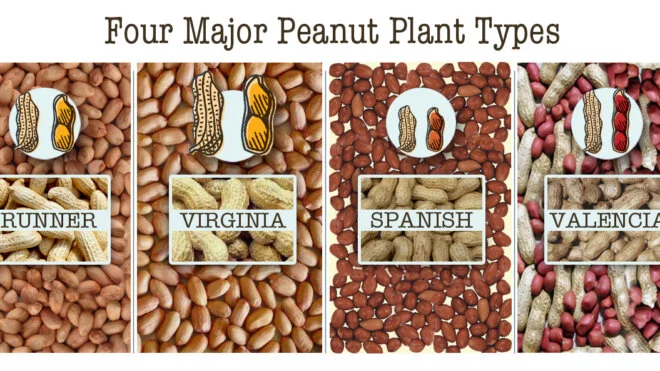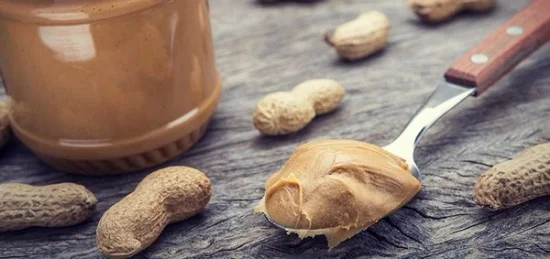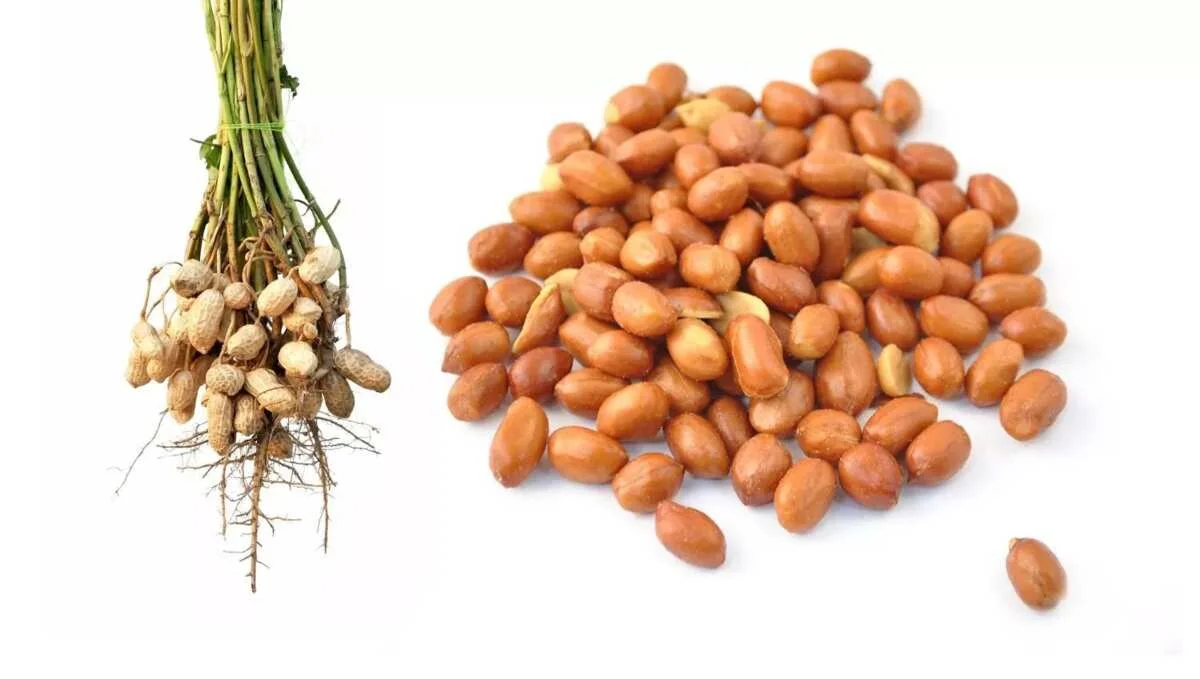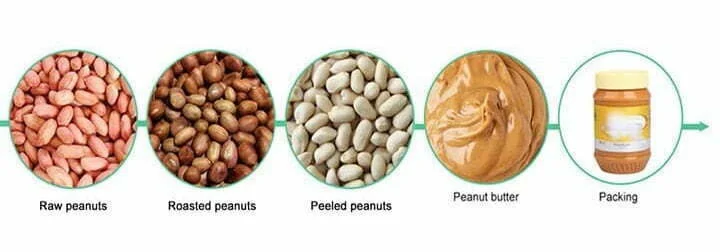
Which Groundnut Is Best For Peanut Butter?
Have you ever wondered what makes that jar of peanut butter you love so creamy and delicious? It's all about the peanuts! Not all peanuts are created equal when it comes to peanut butter though. The type of peanut used can make a big difference in the taste and texture of your PB.
In this article, we'll explore the pros and cons of using Runner, Virginia, or Valencia peanuts and help you figure out which one you should use to get the best peanut butter. We'll look at how roasting affects flavor, oil content, allergies, and more. You may be surprised to find out that your favorite peanut butter brand probably uses one specific type of nut.
After reading this, you'll feel like a peanut butter expert and will know exactly which peanuts you need to make the best batch ever!
An Overview of Peanut Types
Virginia Peanuts
Virginia peanuts have the largest kernels and are considered the “cadillac” of peanuts. They're usually roasted and used for snacks, but their size also makes them ideal for peanut butter. The kernels are packed with a robust, nutty flavor that comes through in the butter. If you want a creamy peanut butter with big peanutty flavor, Virginia peanuts are your best choice.
Spanish Peanuts
Spanish peanuts have smaller kernels with reddish-brown skins. They have an intense peanutty flavor and aroma, with nutty, mildly spicy undertones. Spanish peanuts are often used to make peanut butter, especially “natural” styles with the skins still on. The skins and vibrant flavor of Spanish peanuts result in a coarser, grainier butter with a stronger peanut taste. Spanish peanut butter also tends to separate more and requires frequent stirring.
Valencia Peanuts
Valencia peanuts are sweeter and milder in flavor than Virginia or Spanish peanuts. They have medium-sized pale pink kernels with a delicate, buttery flavor. Valencia peanut butter tends to be smoother, creamier and more homogenized. It has a mild peanutty flavor that’s lightly sweet with nutty, almost almond-like undertones. Valencia peanut butter is a great choice if you prefer a milder peanut flavor and smoother, less grainy texture.
Runner Peanuts
Runner peanuts have small, reddish kernels with a mildly nutty, earthy flavor. They are often used to produce peanut oil and are less common in peanut butter. Runner peanut butter has an intensely nutty, robust flavor from the high oil content, but can be slightly bitter. The small kernels also tend to produce a coarser, grainier butter. Runner peanuts are best when blended with other varietals to balance the strong flavor and gritty texture.
Key Factors in Choosing Peanuts for Peanut Butter
The type of peanut you choose is the most important factor in determining how your peanut butter will turn out. Valencia peanuts have a mild, sweet flavor and creamy texture, making them ideal for peanut butter. Virginias are more robust and nutty, better for crunchy peanut butter. Runners fall somewhere in the middle. Choose a peanut you like to snack on, because that flavor will come through in your peanut butter.
Roasting
Raw or roasted peanuts will produce very different peanut butters. Raw peanuts make butter with an earthy, grassy flavor, while roasted peanuts create a buttery, nutty flavor. Most people prefer the flavor of roasted peanut butter. Roasting the peanuts yourself allows you to control how darkly they're roasted and how nutty the flavor becomes.
Peanut Freshness
Always choose fresh peanuts with an intact, papery skin and avoid peanuts that look shriveled or spotted. Peanuts contain oils that can go rancid over time, so check the ‘best by’ date and look for peanuts processed and packaged within the past year. Rancid peanuts will make a bitter, undesirable peanut butter.
Peanut Butter Style
How you grind the peanuts determines whether you end up with creamy peanut butter, crunchy peanut butter, or something in between. For creamy peanut butter, grind the peanuts into a fine puree. For crunchy peanut butter, grind some of the peanuts more coarsely, leaving nut pieces intact. You can also make ‘extra crunchy’ peanut butter by stirring some chopped peanut pieces into creamy peanut butter. The style you choose comes down to personal preference.
With high-quality, fresh peanuts and the proper grinding technique, you'll be making your own delicious peanut butter in no time.
The Best Peanut Varieties for Peanut Butter
When it comes to making peanut butter, the variety of peanut you use makes a big difference. The two most common types are Spanish and Valencia peanuts.
Spanish Peanuts
Spanish peanuts have red skins and are very popular for peanut butter because of their robust, nutty flavor. They tend to produce a peanut butter with a stronger peanut flavor. Spanish peanuts also have a higher oil content, so peanut butters made from them tend to be creamy and spreadable.
Valencia Peanuts
Valencia peanuts have light brown skins and a milder, sweeter flavor than Spanish peanuts. Peanut butters made from Valencias tend to be lighter in color and milder in flavor. Since Valencias have a lower oil content, peanut butters made from them can be grainier in texture. Many natural and organic peanut butters use Valencia peanuts.
Runner Peanuts
Runner peanuts are a variety grown primarily for commercial use and oil production. They tend to be bland in flavor and low in oil, so they are rarely used for making peanut butter. Some commercial peanut butters may use a blend of Runner and Spanish or Valencia peanuts to balance cost, flavor, and texture.
In the end, the variety of peanut you choose comes down to personal preference. Spanish peanuts will give you a robust, nutty peanut butter, while Valencias produce a milder, sweeter spread. You may need to try different brands to find one that suits your particular tastes. Whether you like your peanut butter mild or robust, spreadable or grainy, there’s a peanut variety perfect for your peanut butter.
Differentiating Groundnuts from Peanuts
When it comes to making peanut butter, it’s important to understand that groundnuts and peanuts are not exactly the same thing. While related, groundnuts and peanuts have some key differences that can affect their use and flavor in peanut butter.
Groundnuts refer to several species of legumes in the Fabaceae family that develop pods with edible seeds underground. The most well-known groundnut is the peanut, Arachis hypogaea, which originates from South America. Peanuts are a specific type of groundnut that have become popular worldwide.
Unlike most other groundnuts, peanuts contain resveratrol, a compound that can help reduce inflammation and lower the risk of some diseases. Peanut butter made from peanuts may have added nutritional benefits compared to butters from other groundnuts. However, some people prefer the flavor and texture of peanut butters made from groundnuts like pignuts or Bambara groundnuts, which tend to be sweeter and crunchier.
When choosing which groundnut to use for peanut butter, consider factors like nutrition, flavor, availability, and personal preference. Peanuts may have a slight health advantage and familiar, robust flavor. But for something different, try groundnuts like pignuts, Bambara groundnuts, or tiger nuts, which produce creamy nut butters with delicate, earthy flavors.
In the end, the best groundnut for your peanut butter is simply the one you enjoy the most. Whether you prefer classic peanuts or want to experiment with other groundnuts, peanut butter can be a delicious and rewarding project. With a little trial and error, you’ll be spreading your creation on bread, fruit, or right off the spoon in no time.
How Peanuts Are Processed Into Peanut Butter?
To make peanut butter, peanuts go through several steps to transform them into the familiar spread. First, the peanuts are harvested, cleaned, and shelled to remove their outer red skins. The peanuts are then roasted to enhance their flavor and aroma. Roasting also darkens the peanut shells and helps loosen the skins.
Shelling and Skinning
After roasting, the peanuts are shelled and their skins are removed. The peanuts are tumbled in drums to loosen and separate the skins from the peanuts. The loosened skins are then sifted and screened out, leaving behind the roasted peanut kernels. Some peanut butters use skinned peanuts, while others keep a portion of the skins on for more texture and flavor.
Grinding
The shelled, roasted peanuts are then ground and milled into a paste. The peanuts are fed into grinders that apply high pressure to crush the peanuts into a smooth or crunchy paste, depending on the desired consistency. Smooth peanut butters require more grinding to achieve a creamy texture. For crunchy peanut butters, some whole or chopped peanuts are left unground and added back into the paste.
Mixing
The ground peanut paste is mixed to achieve an even consistency. For creamy peanut butters, the paste is mixed until completely smooth. For crunchy peanut butters, the ground peanuts are blended with the chopped peanut pieces. Salt, sugar, hydrogenated vegetable oils, and other emulsifiers are also added at this stage to improve texture, prevent oil separation, and enhance flavor.
Packaging
The finished peanut butter is packaged for distribution and sale. It is poured into jars, tubs, and squeeze bottles and sealed to preserve freshness and quality. Properly stored, most peanut butters will last 6-12 months at room temperature. Once opened, it is best used within 2-3 months.
Through harvesting, roasting, shelling, grinding, and mixing, humble peanuts are transformed into the delicious spread we know as peanut butter. The specific combination of peanuts and additional ingredients creates the unique flavors and textures of different peanut butter brands and varieties.
FAQ on Peanuts and Peanut Butter
1. What type of peanuts are best for making peanut butter?
The three most common types of peanuts used for peanut butter are Virginia, Spanish, and Valencia peanuts. Virginia peanuts are the largest and have the highest oil content, making them ideal for creamy peanut butters. Spanish peanuts are smaller, sweeter, and have a higher protein content. They are often used in crunchy peanut butter. Valencia peanuts are the smallest and mildest in flavor. They are usually roasted and salted as snack peanuts.
For the best peanut butter, I would recommend using raw Virginia or Spanish peanuts. Virginia peanuts will produce a smoother, creamier peanut butter while Spanish peanuts will give you a slight texture from the nut pieces. Either type works great, so you can choose based on your preferences for creamy versus crunchy peanut butter.
2. What is the difference between Virginia and Spanish peanuts?
Virginia peanuts are larger and have a more crunchy texture, while Spanish peanuts are smaller and have a higher oil content.
3. What are the main characteristics of Valencia peanuts?
Valencia peanuts are typically smaller in size with bright red skin and are commonly used for making peanut butter due to their naturally sweeter flavor.
4. How do the runner peanuts differ from other types of peanuts?
Runner peanuts are known for their uniform size and shape, making them ideal for processing into peanut butter and peanut oil.
5. What are the main types of peanuts commonly found in the market?
The main types of peanuts are Virginia, Spanish, Valencia, and Runner. Each type has distinct characteristics and uses.
6. What are the key steps involved in processing peanuts into peanut butter?
The key steps in processing peanuts into peanut butter involve harvesting, cleaning, Shelling and Skinning, roasting, grinding, adding ingredients like salt and sugar, and finally packaging the creamy spread.
Conclusion
So there you have it. When it comes to the best groundnuts for peanut butter, Virginia peanuts take the cake. Their large size and high oil content make them ideal. Runner-ups include Spanish and Valencia varieties, which also have solid peanut butter credentials. At the end of the day, you really can't go wrong with any type of groundnut when making peanut butter.
Best Groundnuts for Peanut Butter
The most important thing is choosing raw, unsalted nuts and going natural with as few additives as possible. That way, you get the full experience of rich, creamy peanut flavor in every bite of your freshly made spread. Whip up a batch soon and see for yourself - peanut butter is truly in a league of its own.





